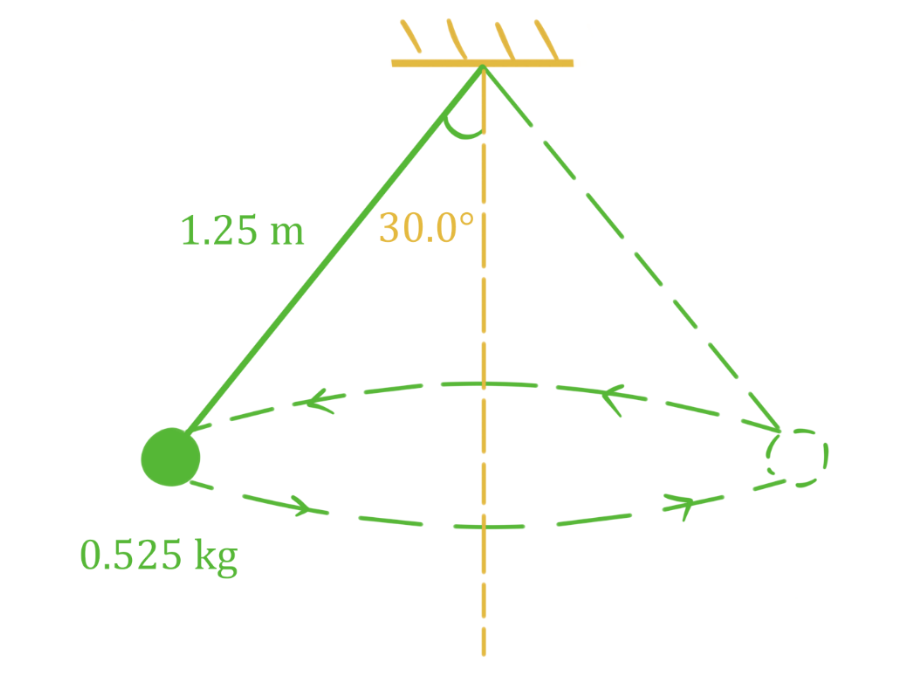- Meaning of uniform circular motion
- Solving problems involving horizontal circular motion
Notes:
- An object moving in a circular path is in circular motion. If the speed of the object is constant, it is uniform circular motion.
- An object in uniform circular motion does experience acceleration, even though its speed is constant. Remember, acceleration is change in velocity, and a velocity is made up of speed and direction. For the object to move in a circle, the direction of its velocity must change constantly. This change in direction is the acceleration, called centripetal acceleration ("centripetal" means "towards the center"). For an object moving in a circular path, the centripetal acceleration vector is always pointed towards the center of the circle.
- Like any other type of acceleration, centripetal acceleration is caused by a force (called centripetal force). The centripetal force vector also always points towards the center of the circle.
- In order for an object to be moving in a circular path, the net force acting on the object must be a centripetal force (a force that always is pointed towards the center). When multiple forces act on an object in circular motion, those forces must add up to a centripetal force. It is important to understand that centripetal force is not a separate force that acts on an object. It is a net force which follows a specific rule: it always points towards the center of the circular path.
- In a horizontal circular motion problem, any forces acting on the object in the vertical direction must balance so that (otherwise the object would accelerate vertically). Only horizontal forces will contribute to the net force causing circular motion.
period, in seconds (s)
frequency, in hertz (Hz)
Centripetal Acceleration
centripetal acceleration, in meters per second squared
velocity, in meters per second (m/s)
radius, in meters (m)
period, in seconds (s)








